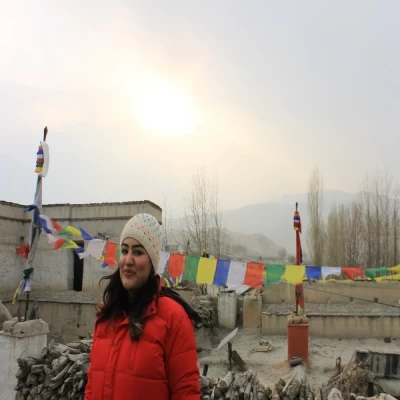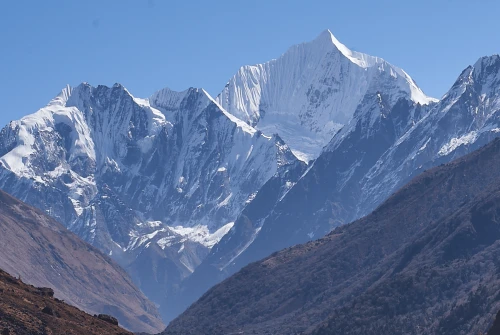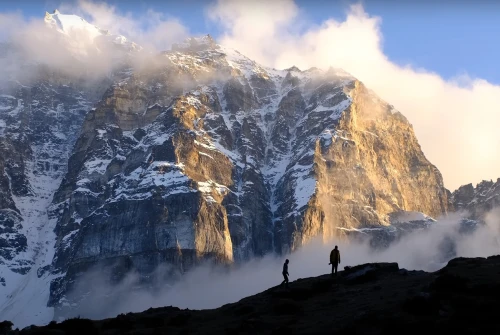Langtang Valley Trek, one of Nepal’s most accessible and scenic trekking routes, offers travelers an unforgettable Himalayan experience. Nestled north of Kathmandu and reaching into the heart of Langtang National Park, this trek blends mountain landscapes, Tamang culture, glaciers, and moderate trails. Before planning your adventure, understanding the cost for Langtang Valley Trek is crucial. Below is an in-depth guide to help you budget effectively and make the most of your trekking experience.
The average cost for Langtang Valley Trek typically ranges between $450 to $900 USD per person, depending on the mode of trekking (independent or guided), duration, level of comfort, and season. Here's a detailed cost breakdown covering every component of the journey.
Trekking Permits and Entry Fees
To trek in the Langtang region, you’ll need two essential permits:
Langtang National Park Entry Permit – NPR 3,000 (Approx. $23 USD)
TIMS Card (Trekkers’ Information Management System) – NPR 2,000 (Approx. $15 USD)
Permits are mandatory for all trekkers and can be obtained from the Nepal Tourism Board office in Kathmandu or via a registered trekking agency.
Transportation Costs (Kathmandu to Syabrubesi and Return)
The Langtang trek starts from Syabrubesi, a small village about 122 km from Kathmandu.
Public Bus – NPR 1,000–1,200 ($8–10 USD) one way
Shared Jeep – NPR 1,500–2,500 ($12–20 USD) one way
Private Jeep – NPR 15,000–18,000 ($115–140 USD) one way (can be shared among 6-7 people)
The road journey takes 7–9 hours and can be rough in some sections, so many prefer jeeps for comfort and speed.
Guide and Porter Costs
Hiring a professional guide and/or porter enhances the trekking experience and supports the local economy.
Licensed Trekking Guide – $25–35 USD per day (including food, accommodation, and insurance)
Porter – $18–25 USD per day (can carry up to 20–25 kg)
Guide-cum-Porter – $20–30 USD per day (for budget travelers)
Hiring a guide is highly recommended for safety, navigation, and cultural insights, especially if it’s your first trek in Nepal.
Accommodation Costs in the Langtang Valley
Langtang offers comfortable tea houses and basic lodges throughout the route.
Cost per night (basic room) – NPR 500–800 ($4–6 USD)
Some tea houses offer free accommodation if you dine there
Rooms are generally twin-sharing with basic bedding and attached or common toilets. Heating is rare, and hot showers may cost extra.
Food and Drinks Costs on the Trek
Food prices increase with altitude due to transportation challenges.
Breakfast – NPR 300–500 ($2.5–4 USD)
Lunch/Dinner – NPR 500–700 ($4–6 USD)
Dal Bhat (typical Nepali meal) – Unlimited servings, highly recommended
Hot Drinks (Tea/Coffee) – NPR 100–200 ($0.8–1.5 USD)
Mineral Water (1 liter) – NPR 100–200 ($0.8–1.5 USD)
Average daily food cost is around $15–25 USD, depending on your appetite and dietary preferences.
Miscellaneous Expenses
Several other costs can arise during the trek:
Wi-Fi – NPR 200–500 ($1.5–4 USD) per session (available in some tea houses)
Hot Shower – NPR 300–500 ($2.5–4 USD)
Charging Electronics – NPR 200–500 ($1.5–4 USD) per device
Snacks and Toiletries – Bring these from Kathmandu for cheaper prices
Tips for Guide and Porter – Recommended 10–15% of their fee
Travel Insurance Cost
A critical aspect often overlooked is travel insurance, especially one that covers high-altitude trekking (above 3,000 meters).
Average Cost – $50–100 USD for 15–30 days
Make sure your policy includes emergency helicopter evacuation and medical expenses
Companies like World Nomads, IMG, or Global Rescue offer specialized plans for trekkers in Nepal.
Trekking Gear Cost
If you don’t already own the gear, you can rent or buy it in Kathmandu.
Sleeping Bag – Rental: $1–2/day, Purchase: $30–60
Down Jacket – Rental: $1–2/day, Purchase: $40–80
Trekking Poles – $5–15 USD
Trekking Shoes – $50–100 USD
Daypack, Headlamp, Thermals, Water Bottles – Budget $100–150 if buying everything
Renting from Thamel shops is economical if you're not a frequent trekker.
Independent vs. Organized Trek – Which is Cheaper?
Trekking Type | Estimated Cost | Description |
Independent Trek | $350–550 USD | Suitable for experienced trekkers, requires planning |
Guided Trek via Local Agency | $600–900 USD | Includes permits, guide, porter, transport, and insurance |
Luxury Trek Package | $1000+ USD | Includes upgraded hotels, private jeeps, hot showers, and high-end guides |
Trekking with a local operator ensures safety, comfort, and ethical travel, while independent trekking is ideal for budget-conscious adventurers.
Cost-Saving Tips for Langtang Trek
Travel in a group to split transport and guide costs
Avoid bottled water – carry water purification tablets or use boiled water
Eat dal bhat for filling and unlimited meals
Bring your own snacks, power bank, and toiletries
Travel in the off-season (winter or monsoon) for possible discounts
Best Time to Trek Langtang Valley (Seasonal Impact on Cost)
Spring (March–May) – High season, beautiful rhododendron blooms, slightly higher prices
Autumn (Sept–Nov) – Clear skies, peak tourist traffic, standard prices
Winter (Dec–Feb) – Cold and quiet, discounts available
Monsoon (June–Aug) – Risk of landslides, leeches, low prices, but limited views
Choosing the right season affects not just cost but overall experience.
Is Langtang Valley Trek Worth the Cost?
Absolutely. With its proximity to Kathmandu, rich cultural encounters, stunning landscapes, and moderate trekking difficulty, Langtang Valley Trek offers excellent value for both beginners and seasoned trekkers. You get the Himalayan essence without the crowds of Everest or Annapurna and at a fraction of the cost.
Budgeting for your Langtang Valley Trek is straightforward and requires proper planning. Whether you opt for a solo journey or a fully guided adventure, the cost for the Langtang Valley Trek remains affordable, making it one of the best-value treks in Nepal. Spend wisely, travel responsibly, and immerse yourself in the soul-stirring beauty of the Langtang Himalayas.



 based on 3 reviews
based on 3 reviews
.webp)

